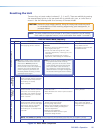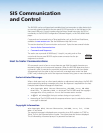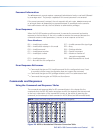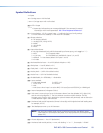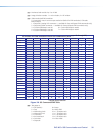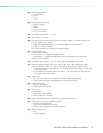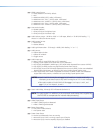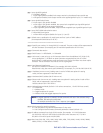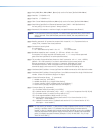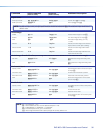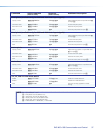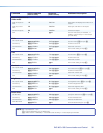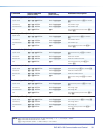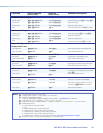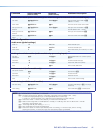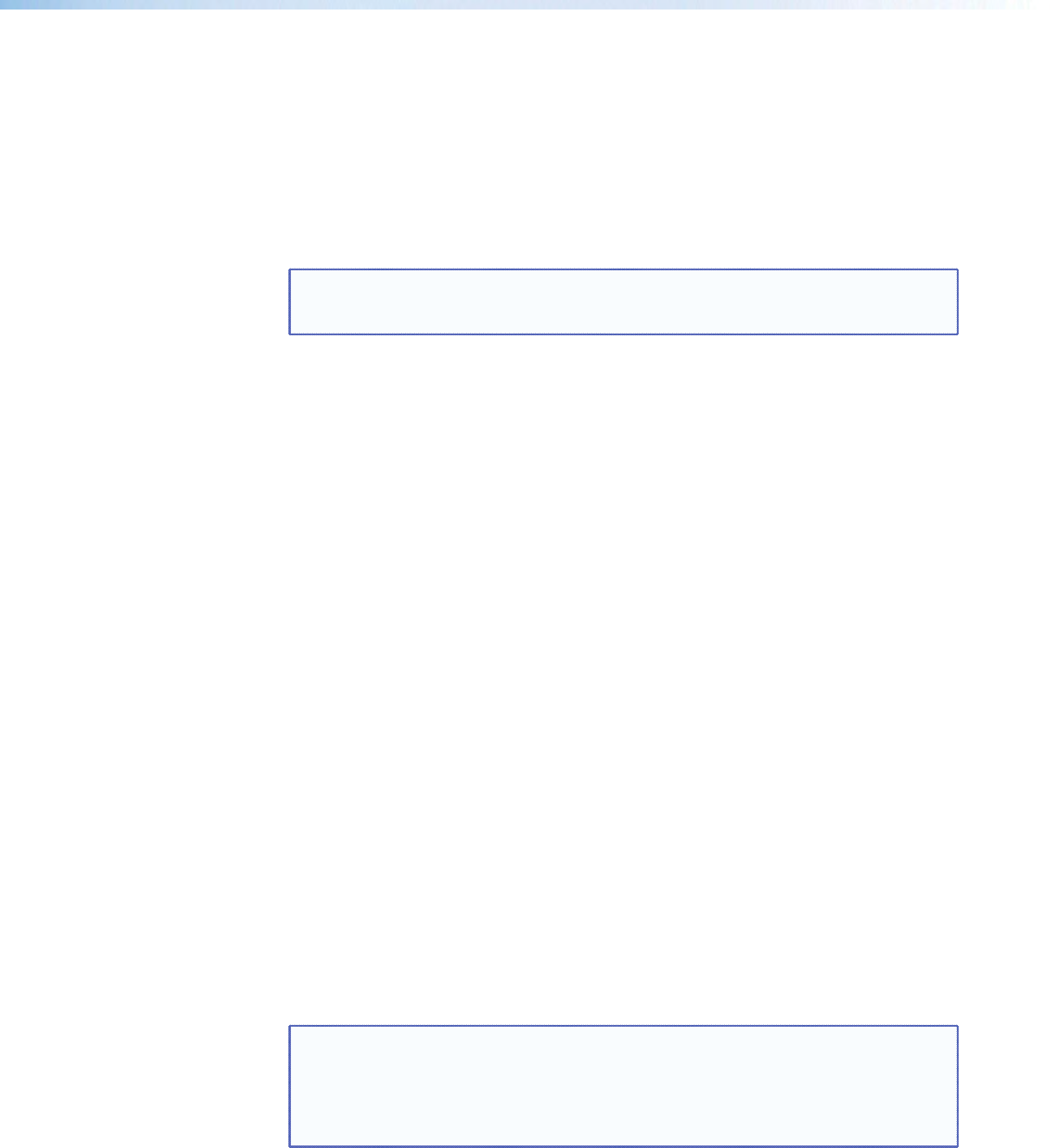
X11% = Parity: Odd, Even, None, Mark, Space [only use the rst letter] (default is N = None)
X11^ = Data bits: 7, 8 (default = 8)
X11& = Stop bits: 1, 2 (default = 1)
X11( = Flow Control: Hardware, Software, None [only use the rst letter] (default is N = None)
X12) = Data Pacing [specied in milliseconds between bytes]: 0000 – 1000 (default=0ms).
For host port(s), this value is ignored – always returns 0.
X12! = Password (12 characters = maximum length; no special characters are allowed.)
NOTE: A user password cannot be assigned if no administrator password exists; the E14 error
code is returned. If the administrator password is cleared, the user password is also
removed.
X12# = Reading password: All connections respond with 4 asterisk (****) if password exists or
empty if not, instead of the actual password.
X12% = Connection’s security level:
0 = anonymous, 11 = User,
1 – 10 = extended security levels 1 thru 10 12 = Administrator
X12^ = Broadcast repetition rate in seconds, (0 – 255 max; default = 0 = clear)
The response is 2-digits returned with leading zeros. 1 – 11 = entry without password
goes to the level specified (if an admin password exists).
X12& = The number of seconds before timeout on the IP connection: min. = 1; max. = 65000;
(default = 30 = 300 seconds). If no data is received during the timeout period, the
Ethernet connection is closed. Each step = 10 seconds. Applicable only when
connected via Ethernet. When connected via RS-232 only the global timeout
commands apply (current returns E13). Response is returned with leading zeros.
X12* = Hardware (MAC) address: 4 most-signicant hex nibbles converted to 16-bit decimal number.
X12( = Hardware (MAC) address: 8 least signicant hex nibbles converted into single 32-bit decimal
number. (Note: this could be as large as 10 digits!)
X13) = General Information Query (‘I’ commands)
1 = Model name [e.g. <DVS 605>]
2 = Model description [e.g. <Digital Video Scaler>]
3 = System memory Usage [ <# Bytes Used out of # Kbytes> ]
4 = User memory Usage [ <# Bytes Used out of # Kbytes> ]
X13! = Firmware Query (‘Q’ commands)
*Q = Firmware and build number [<X.YY.ZZZZ> ]
0Q = Verbose version information [<2Q> - <3Q> - < 4Q>] sum of responses from 2Q-3Q-4Q
1Q = Firmware version [<currently running code (X.YY)>]
2Q = Final stage bootloader (Uboot) version [<X.YY>]
3Q = Factory base code version [<factory base code (X.YY)>*<kernel version (X.YY) –
description – date loaded >]
4Q = Updated rmware version [<updated code version (X.YY)>*<kernel version (X.YY) –
description – date loaded >]
NOTE: For 3Q and 4Q, an asterisk ‘*’ after version number indicates which version is currently
running. A question mark (?.??) indicates that only the factory firmware version is
loaded. A caret (^) indicates the firmware version that should be running, but a Mode 1
reset was executed and the default factory firmware version is loaded. An exclamation
point (!) indicates corrupted rmware. [Example: 1.03*(1.42-DVS 605 -Thu, 21 Apr
2012 22:30:57 GMT).]
DVS 605 • SIS Communication and Control 34



